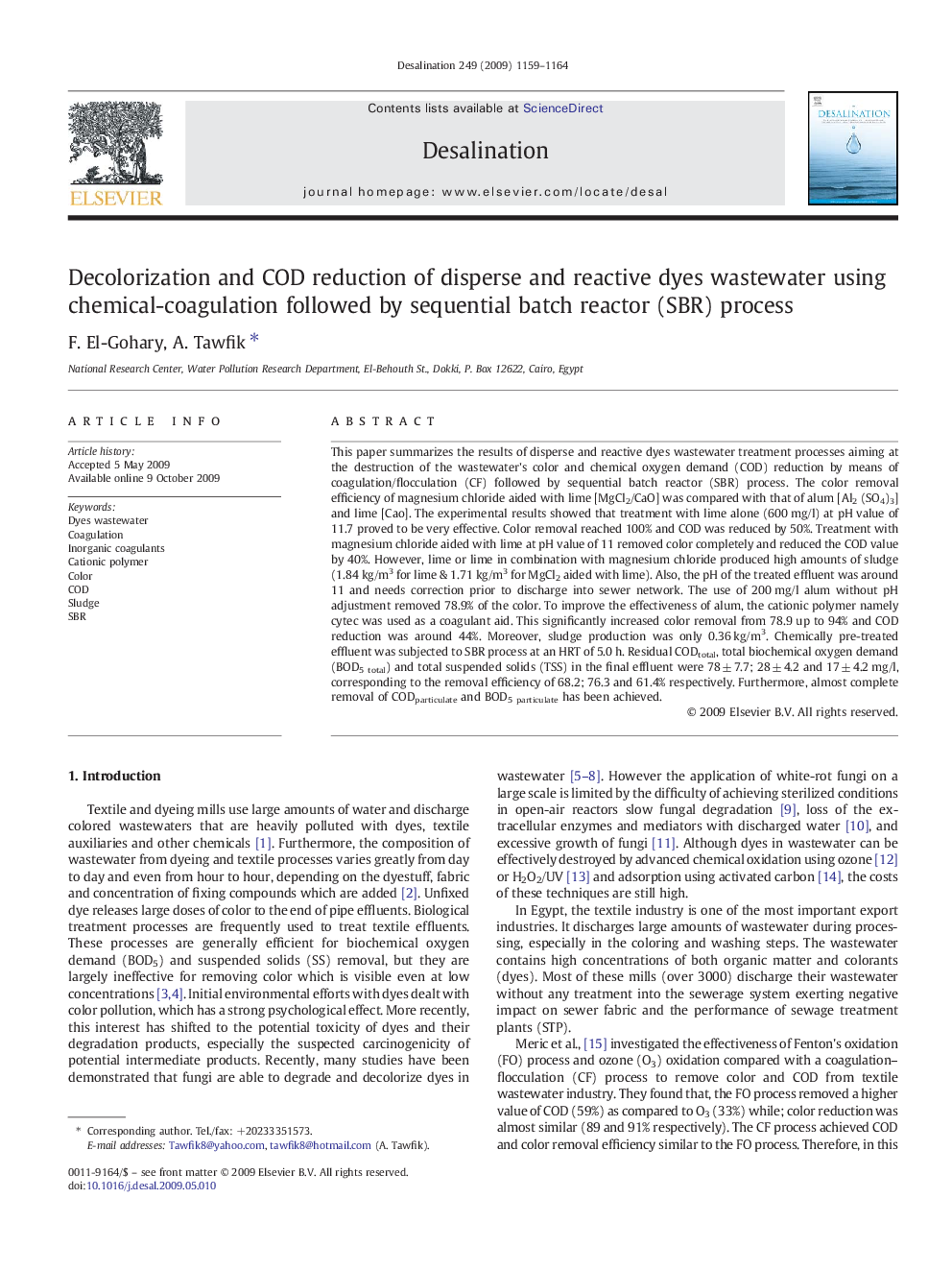| کد مقاله | کد نشریه | سال انتشار | مقاله انگلیسی | نسخه تمام متن |
|---|---|---|---|---|
| 626218 | 882867 | 2009 | 6 صفحه PDF | دانلود رایگان |

This paper summarizes the results of disperse and reactive dyes wastewater treatment processes aiming at the destruction of the wastewater's color and chemical oxygen demand (COD) reduction by means of coagulation/flocculation (CF) followed by sequential batch reactor (SBR) process. The color removal efficiency of magnesium chloride aided with lime [MgCl2/CaO] was compared with that of alum [Al2 (SO4)3] and lime [Cao]. The experimental results showed that treatment with lime alone (600 mg/l) at pH value of 11.7 proved to be very effective. Color removal reached 100% and COD was reduced by 50%. Treatment with magnesium chloride aided with lime at pH value of 11 removed color completely and reduced the COD value by 40%. However, lime or lime in combination with magnesium chloride produced high amounts of sludge (1.84 kg/m3 for lime & 1.71 kg/m3 for MgCl2 aided with lime). Also, the pH of the treated effluent was around 11 and needs correction prior to discharge into sewer network. The use of 200 mg/l alum without pH adjustment removed 78.9% of the color. To improve the effectiveness of alum, the cationic polymer namely cytec was used as a coagulant aid. This significantly increased color removal from 78.9 up to 94% and COD reduction was around 44%. Moreover, sludge production was only 0.36 kg/m3. Chemically pre-treated effluent was subjected to SBR process at an HRT of 5.0 h. Residual CODtotal, total biochemical oxygen demand (BOD5 total) and total suspended solids (TSS) in the final effluent were 78 ± 7.7; 28 ± 4.2 and 17 ± 4.2 mg/l, corresponding to the removal efficiency of 68.2; 76.3 and 61.4% respectively. Furthermore, almost complete removal of CODparticulate and BOD5particulate has been achieved.
Journal: Desalination - Volume 249, Issue 3, 25 December 2009, Pages 1159–1164